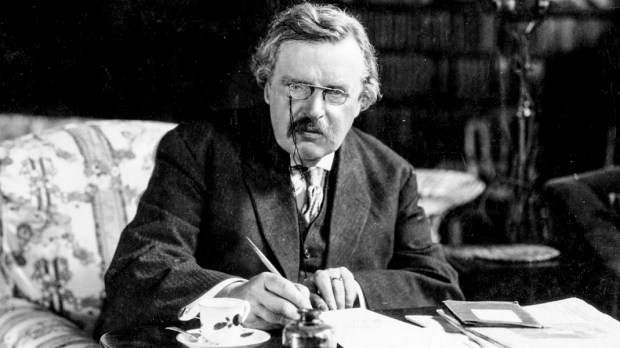Lenten Campaign 2025
This content is free of charge, as are all our articles.
Support us with a donation that is tax-deductible and enable us to continue to reach millions of readers.
In 1909, the English writer G.K. Chesterton and his wife, Frances, moved out of London and settled in a village 25 miles to the northwest, Beaconsfield. The name of the house they occupied was Overroads, and they stayed there from 1909 until 1922. They then moved to another house in Beaconsfield named Top Meadow and lived there the rest of their lives.
The Chestertons willed that both Overroads and Top Meadow be bequeathed to the local Catholic diocese. According to K.V. Turley, writing at Crisis magazine, the will stipulated that the properties were to be used as a seminary, convent, or temporary resting place for Anglican clergymen who had converted to Catholicism (Chesterton himself was an Anglican who became Catholic).
“Eventually, however, the diocese sold the two houses,” Turley relates. “Today both houses are privately owned. Although Top Meadow is recognized as a building of historic significance and therefore is classified as a ‘listed building,’ enjoying some measure of protection, Overroads has no such status.”
That’s unfortunate, because there is a serious danger that the house might be torn down. Last year, the owners put the house on the market with an asking price of £1.9 million pounds (about $2.4 million dollars).
“They found no buyers, and so turned to property developers,” Turley wrote January 27. “These, in turn, applied to the local council for permission to knock down the house and erect an apartment block in its stead. The demolition and building application was lodged just before Christmas; the decision came through last week: the application was refused.”
Alas, that is not the end of the story. There is another planning application from the same developers, and it is still pending.
Turley noted the significance of Overroads, saying that Chesterton wrote The Ballad of the White Horse, Manalive, Magic, and The Flying Inn, as well as countless essays and journalism, at the threatened property.
The Literature Network notes that between 1913 and 1914 Chesterton was a regular contributor for the Daily Herald. After 1922, when Chesterton became a Catholic, he wrote several theologically oriented works, including lives of St. Francis of Assisi and St. Thomas Aquinas. He died on June 14, 1936, at his home in Beaconsfield.
“For many, the only reason they know of Beaconsfield and have any affection for the place is because of Chesterton,” Turley pointed out. “Without Chesterton, Beaconsfield would be simply another nondescript town north of London. It would certainly never have become a place of pilgrimage for legions of Chestertonians the world over who come and stand between Overroads and Top Meadow to give thanks for the writer who has entertained and enlightened them.”

